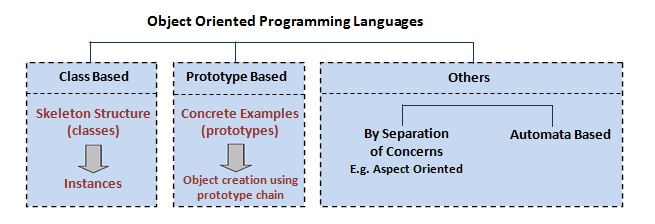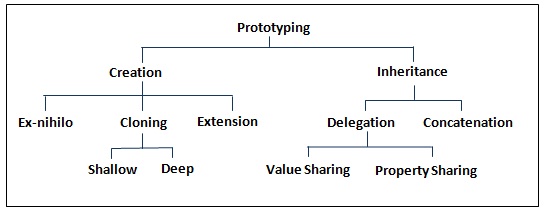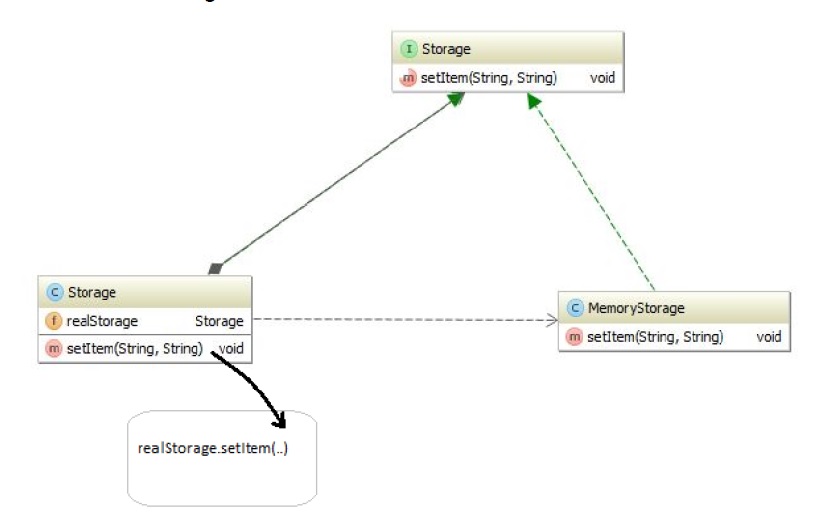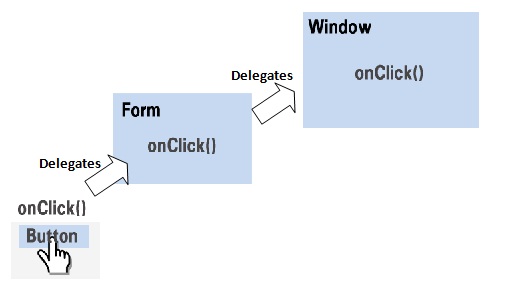CSC/ECE 517 Fall 2010/ch4 4e ms
Prototype Based Programming
"Objects in the real world have only one thing in common: they are all different" (anonymous, A. Taivalsaari, JOOP, Nov. 1997)
Introduction
Prototype based programming is an object oriented programming methodology. It differs from the other classes of object oriented languages due to its main characteristic feature that no classes are present in the language constructs. Behavior reuse or inheritance is performed by cloning some instance or prototype objects. Thus, it is also known as 'instance-based programming' or 'class-less based programming' and such languages are known as 'prototype based languages'.
Objects used in prototype based programming are referred as prototypes, which resemble an instance of a class in class-based programming. It differs from a class instance as one can add or remove variables and methods at any level of a single object, without worrying if the object still fits in the system. Typically, new objects are created by copying existing objects, which is called as cloning.
Object Oriented programming languages are classified based on following criteria:
- Class based : Object instances are created fro skeleton or blueprint of the class.
- Prototype based : Object instances are created from concrete examples and other objects are created with such a prototype reference.
- Automata based : The program is thought of as a model of a finite state machine or any other formal automata.
- Based on separation of concerns e.g. aspect oriented languages
The figure below shows where prototype based languages fit in the broad classification of object oriented languages.
Since prototype based languages do not distinguish between classes and instances, there is the concept of just objects. There are three types of objects- normal objects, prototypes and traits. Prototypes and traits are not real objects but the term object is loosely used to signify their specialization feature. Normal objects are used to represent the local state. Prototypes are blueprints to generate clones. Traits, if used in the programming language, are abstract descriptions of objects that do not possess a state i.e. only provides a set of methods. Traits are never cloned or used directly and are intended only to be used as the shared parents of normal objects. [1]
History
- Eleanor Rosch first introduced the 'Prototype Theory' in mid-1970's. Rosch proposed that to classify objects, one can match them against a "prototype" i.e. an ideal example which exhibits the most representative features of the category of objects. This evolved the concept of frame based languages that used the prototype theory in the field of knowledge representation languages. Here, frames were used to represent knowledge like typical values, default values, or exceptions.
- The concept of prototypes was later picked up in programming languages in the 1980s when Borning proposed the description of a classless language. The underlying feature of this language was that new objects were essentially being produced by copying and modifying prototypes. The classless model of object oriented programming thus brought forward several issues related to class based programming and proposed various solutions based on the use of prototypes. [1][7]
Characteristics
In prototype based languages, prototype is chosen by using concrete examples rather than abstracting out common attributes. This offers a programming model with fewer primitives. This is also a less restrictive knowledge representation model wherein objects are not coupled too tightly. Most popular object-oriented programming languages used are class based where all objects of a certain class share the same properties. At first the prototype paradigm is difficult to comprehend compared to class-based, such as Java and C++, which base their structure on the concept of two marked entities: classes and instances. We comparatively discuss the features of prototype based languages with class-based ones to understand its programming model and advantages.
Comparison between prototype-based languages and class-based languages
| Feature | Class Based Programming e.g. Java, C# | Prototype-Based Programming e.g. JavaScript, Self |
|---|---|---|
| Object Model | Based on the class and instance entity model i.e. structure of object is defined by classes. | Every object is an instance, there are no classes. |
| Object definition and creation | Class defined with explicit class definition; class instantiated with help of constructors. | Creates objects by assigning an object as the prototype where each prototype is associated with a constructor function. |
| Abstraction | Uses abstract definitions/representation. | Does not use abstract definitions. |
| Parental Dependency | The parent of an object cannot be altered | Allows to change parent of object at runtime |
| Inheritance | Class definitions are used to define subclasses and the subclasses inherit properties by following the class chain. | Objects inherit properties based on the hierarchy of the prototype chain. |
| Dynamic Structure | The class structure is static and contains all the properties that an instances of a class can have. One cannot add properties dynamically at run time. | The prototype or constructor function specifies the initial set of properties and one can add or remove properties dynamically of the particular object or of the entire set of objects. |
Thus, prototype based languages offer capabilities to represent knowledge in a way different than class based languages. Some of these representations are often difficult to represent in class based languages. Following are some examples:
- One can have different objects of the same family but having different structures and behaviors
- Objects with totally exceptional behavior
- Objects with view points and sharing at the object level
- Incomplete state objects
Also, in the real world, entities or objects can be viewed as sets or prototypes. Sometimes modeling these architectural features in class-based languages exhibits certain limitations as they are rigid in terms of defining concepts with the idea of shared properties. Some real world examples where prototype based approach is preferred to class based one are traffic jam representation systems, greenhouse effect representation systems. [2]
Classification of Prototype Based Languages
It is very challenging to classify the set of prototype based languages due to the variations in implementation models for each language. However, these are needed at some level to adjudge which programming language model best suits the given needs. We classify these based on their primitive semantics:
Slots or methods and variables
A property is a binding of a name to a value within an object and each object is defined by a set of properties. Properties can be of two kinds: attributes or methods. In general programming terminology one can represent these properties of objects in two ways: 1. By separating attributes and methods . 2. By amalgamating attributes and methods into something known as "slots".
Thus, slots hold data values as well as methods. Some languages differentiate between methods and variables, while others treat them in the same way. Self treats methods and variables as same, which allows to over-ride an attribute with a method and vice versa. In prototype based languages one can add or change not only data but also methods. For this reason, most prototype-based languages refer to both data and methods as "slots". Slots are defined to answer messages. Either data or code can be found in a slot as the result of sending a message. Data is just returned, and code is actually executed. If a prototype does not contain a requested slot or does not know how to answer a specific message it may delegate the request to another prototype through an inheritance relation which is discussed next. [8]
Object Creation
Objects can be created in two ways:
1. Ex nihilo (from scratch)
The systems using this model provide a special syntax for specifying the properties and behaviors of the newly created objects. These do not reference the existing objects for object creation. To implement this most programming languages use the Object prototype which contains all the common attributes and behaviors. It acts like a master blueprint for all other objects.
2. From existing object (by cloning or extending)
In this approach the new object then carries all the qualities of the original. Some languages enforce child object to maintain an explicit link to its prototype and changes in the prototype cause corresponding changes to be reflected in its clone. Other systems enforce that changes in cloned objects do not automatically propagate across descendants.
Inheritance and Sharing
Since the prototype is used to create other objects using cloning, its properties can be read through all objects of the class. These properties are actually a single shared copy. Thus, a read on these properties will retrieve the shared value from the prototype object. The cloned object can then set the value of one of these properties. This action will actually create a new property for that object. This new property can then 'shadow' or 'hide' the property from prototype object. Clones in some languages don't get affected by change in their parent's behavior, thus help an object to not unexpectedly change through its clone. Languages are classified on the basis of how the primitives of writing on shared property, creating new property, message passing affect the prototypes. e.g. Javascript and Kevo both handle object sharing differently [3].
Delegation
Delegation is a language feature that ‘delegates’ or ‘hands over’ a task to another object based on certain method lookups in the hierarchy at runtime. Thus, an object can use another object's behavior. This sounds a lot like inheritance, but inheritance allows the similar method dispatching based on the ‘type’ of object at compile time as opposed to delegation which works on instances. Thus, delegation can be used to support inheritance of methods in a prototype based system.
Delegation is of two types:
1. Value Sharing: A type of sharing between representation of different entities. It is the ability of an object to share the values of a parent when an object is made using clone.
2. Property Sharing: A type of sharing between viewpoints on the same entity. It is the ability of an object to share all or some of its properties with another object.
Concatenation
Concatenation based prototype inheritance or concatenative-prototyping is another style to achieve inheritance. Instead of using traditional inheritance and delegation methods it uses incremental modification i.e. it allows duplicating existing objects and also flexibly editing them. This involves 2 operations 'new' and 'clone' e.g. For creation of an object ColorWindow, the object creation would involve copying the existing 'Window' object and then adding new properties to the created copy using another module function say 'add'. Concatenation is achieved by late binding i.e. inherited properties that are defined earlier can be modified in an incremental fashion at run-time. There are also no links from the object to the prototype from which it is cloned. The advantage of this is that there are no side-effects of modifications on an object across other clones from the parent. The drawback is that if one needs to propagate these changes it involves more overhead. Besides, there is also memory wastage as there is no shared implementation. To avoid the issue of memory an additional field that recognizes if a parent is cloneable or not can be introduced. An example of a prototype language that uses concatenation is Kevo. [9]
Concatenation Vs Delegation
| Concatenation | Delegation | |
| read Car.model | Mitsubishi | Mitsubishi |
| read Car.maxSpeed | 110 | 110 |
| read Car.licencePlate | NC765 | NC765 |
| write Car.maxSpeed = 75 | ||
| read Vehicle.maxSpeed | 75 | 50 |
| read Truck.maxSpeed | 90 | 90 |
| read Truck.model | 4 Wheel Drive | 4 Wheel Drive |
| read Truck.licencePlate | NCXXX | NCXXX |
| write Truck.model = Volvo | ||
| read Truck.model | Volvo | Volvo |
Primitives of virtual machine
The semantics of the virtual machine primitives underlying each language also distinguishes the various types of programming languages.
Another parallel and overlapping classification of prototype based languages is based on group oriented constructions i.e. classification according to the level of abstractness of the constructions. Following are the high level groups:
1. Purely prototype based: Self, Kevo, Taivalsaari, Agora, Omega, Obliq, NewtonScript
2. Not Strictly prototype based: Object-Lisp, Yafool
3. Languages mixing prototypes and classes.
Programming Constructs
Prototype based languages are varied in terms of their implementation patterns. We will consider the features of JavaScript, one of the most popular prototype based languages, for deeper insight into the typical implementation of programming constructs in prototyping.
Creating Objects
As mentioned earlier the object property can be either methods or attributes. While creating a new object the constructor function is used which typically wraps the initial values to properties of the object. e.g.
function vehicle(model, licencePlate, maxSpeed) {
this.model = model
this.licencePlate = licencePlate
this.maxSpeed = maxSpeed
}
var car1 = new car("Mitsubishi", "NC765", "135") ==> Javascript makes use of the new keyword.
On creation the new object will have the properties:
car1.model // value="Mitsubishi car1.licencePlate // value="NC765" car1.maxSpeed // value="135"
In prototype based languages one can add own customized properties to any object[10]. For this no special declarations are needed, just choosing the name of property and accessing it takes care of the inclusion of the property. We can illustrate this using the above example. Consider we add a new property to the constructor's prototype property like shown below-
car.prototype.companyOwned = true
This will then affect any new object that we are about to create as it automatically inherits the new property and its value. However, one can still override the value of the companyOwned property for an individual car object. There are different variations to this rule and different programming languages can restrict this kind of change propagation.
Cloning
There are 2 levels at which an object can be cloned. These are deep cloning and shallow cloning. In shallow cloning, a copy of an object is created wherein just the references of the sub-objects are copied. In deep cloning, a complete duplicate of the original is created, i.e. it creates not only the primitive values of the original object but also copies all its sub objects as well.
JavaScript supports shallow cloning. The copy(), clone() functions are used to clone an object.
i) clone() uses JavaScript's built-in prototype mechanism to create a cheap, shallow copy of a single Object.
e.g. john2 = owl.clone(john);
ii) copy() makes a shallow, non-recursive copy of a single object.
e.g. john4 = owl.copy(john);
One can define a deep copy algorithm to reursively copy every member explicitly.
Delegation
Instead of adhering to class, subclass and inheritance schemes, similar to object oriented languages, JavaScript has prototype inheritance. Suppose the script wants to read or write a property of an object then a search with the following sequence is performed over the property name:
- Prototype property of instance is picked if defined
- If no local value exists then check value of prototype property in object’s constructor
- Continue prototype chain till a match is found of the native Object object.
The best example of delegation would be event delegation in JavaScript. Events are the main components of JavaScript. They are triggers to invoke the script. Event delegation works on the principle assumption that if an event is triggered on an element then the same event is triggered on all of the element's ancestors in the tree. Delegation is achieved by attaching a handler to the parent DOM [document object model] element. [4]
Consider the DOM model with a window containing a form and a button inside it. The onClick() event associated with the click trigger follows the order below to delegate responsibility:
1. Button.onClick()
2. Form.onClick()
3. Window.onClick()
The above propagation description is illustrated in the diagram below.
This event propagation can be explicitly stopped using the function - event.stopPropagation(). The advantage achieved here is that a single event handler is used to manage a particular type of event for the entire page. This also consumes less memory. Thus event delegation is a great technique to avoid repetition of the same event assignments for elements within a parent element. This is particularly useful in the DOM model where elements are added dynamically to the page.
Message Passing
One can use both function calls as well as message passing mechanism in JavaScript. The need to use message passing arises in complex JavaScript based user interfaces where one may have a single variable that refers to different kinds of objects. Each of these referenced objects can contain different functions. Thus, on every function call from the variable one has to make sure that it is calling a function that the target object implements. In such cases message passing is a more feasible solution wherein if a function is called and it is not implemented then no exception is thrown, instead a null is returned as an indication.
e.g.
var newCar = new Car(); var returnValue = message(newCar, ‘carColor’, 1999);
A message will be passed to newCar object instance, which then invokes the function carColor that ideally returns some color object. The return value will be sent back and and will be assigned to returnValue just like a traditional function call. If the object doesn't implement carColor, it wont throw an exception, instead the return value will be just null. Message passing can be extended to forward messages between objects. In JavaScript this is achieved when invoking object implements a function called forwardInvocation.
e.g.
var classOne = new Class({
forwardInvocation: function(){
return objectTwo;
}
});
var classTwo = new Class({
forwardInvocation: function(){
return objectThree;
}
});
var classThree= new Class({
receivingFunction: function(){
return 'New Message!'
}
});
objectOne = new classOne(); objectTwo = new classTwo(); objectThree = new classThree();
alert(message(objectOne, 'receivingFunction')); ==> New Message!
Here, the message handler recursively forwards the message from objectOne to objectTwo until it finally reaches objectThree and the message is displayed as an alert message.
Other Prototype Based Languages
Self
Self is the canonical example of prototype based languages. It was developed by David Ungar and Randall Smith as part of the Klein project, which was a virtual machine written fully in Self. Self is similar to Smalltalk in syntax and semantics. It uses prototypes unlike Smalltalk which uses class based paradigm. Objects are comprised of slots where the slot stores name and reference to the object. Interaction with object is done with message sending. Slots are viewed as method slots and data slots. Method slots are used to return result when a message is received, while data slots work like class variables in class based programming. New object is created by making a copy of existing object and then adding slots to get desired behavior. Data slots can be made as parent slots. A parent slot delegates message to the objects it refers, if the selector of that message is not matched to any slots in it. Thus, a method has to be written only once. It uses the trait object such that when methods are written in a trait object, it can be used by any other object.
Omega
Omega is a prototype based language developed by Günther Blaschek. It is a statically typed language. It uses inheritance instead of delegation by introducing types where every prototype corresponds to a type. Thus a subtype hierarchy is defined by using inheritance between prototypes. Omega characterizes into a prototype based language because prototypes can be replicated by cloning and altered by making modifications prior to its instance formation. Other key features of Omega are :
- Single inheritance
- Conditional assignments
- Genericity i.e. providing parametrized types. E.g. List (of:Float) or List (of:Student).
- Garbage collection
- Monomorphic types i.e. one cannot perform overloading without providing a specific type signature. The functions are thus restrictive as they work on only one type.
Kevo
Kevo is another prototype based programming language created by Antero Taivalsaari for Macintosh computers. It is semantically similar to the languages Self and Omega and resembles Forth syntactically. It varies from other prototype based languages in the way inheritance and delegation are handled in it. This is mainly because Kevo objects are self-contained and do not share properties with other objects i.e. it follows the concatenation model where changes in the prototype do not propagate to the cloned object. Kevo provides the extensibility to manipulate objects flexibly by use of certain module operations. These module operations are capable of publishing updates from the prototype across a certain set of objects based on their similarity in the family tree by use of some additional primitives. Another distinct feature of Kevo is that it uses a threaded code interpreter.
NewtonScript
NewtonScript was created by Walter Smith for Apple's Newton MessagePad. The motivation for creation of this language was designing GUI for the Newton platform with low memory consumption. As this is an issue in class-based languages wherein an instantiation of a class causes memory being allocated for all object attributes, Walter chose to design a prototype based language wherein creating an instance would be equivalent to creating a frame that inherits from some prototype frame. Note that this class creation scheme does not allow data hiding, instance variables are still accessible from other functions not belonging to the class. It allows factoring out common behavior of frames and gives some clearly defined interface to a set of data. Applications of NewtonScript are now only restricted to mainly the Newton platform mobile and embedded devices. Despite running on a platform with only very low RAM, NewtonScript supports many modern language features such as exceptions and garbage collection. [5]
Criticism
- Although class based programming seems to be very restrictive in nature, it provides better type-safety and predictability. This is not the case with prototype based languages wherein this violation is particularly observed in case of the delegation mechanism which allows the parent to be modified during runtime. Any unintended changes will affect the parent and alter the behavior of system which might be undesirable.
- Prototype based languages were developed incrementally based on specific platforms or implementation requirements. Thus, the larger community of developers is not well versed with its concepts. [11]
Applications
Most of the prototype based languages were developed as needs to certain specific applications. These applications include:
1. Low memory consumption based systems e.g. NewtonScript [6]
2. Vocabulary acquisition and teaching analysis
3. Mental lexicon analysis
4. Cognitive linguistics and linguistic data analysis
5. Traffic jam representation systems
6. Greenhouse effect representation systems [2]
Conclusion
Thus prototype based languages propose a vision of object-oriented programming based on the notion of a prototype. Numerous prototype based languages have been designed and implemented. Most popular ones include Self, Kevo, Agora, Garnet, GlyphicScript, Moostrap, Omega, Obliq and NewtonScript. Some languages like Object-Lisp and Yafool which are not strictly prototyped but offer related mechanisms by use of prototyping at the implementation level have also been developed. [1] All of these represent another view of the real world objects not relying on advance categorization and classification, but rather on making the concepts in the problem domain as tangible and intuitive as possible. [8]
Suggested Reading
- Prototype Design Pattern
- Prototype Thoery, Cognitive Linguistics and Pedagogical Grammar - R.K Johnson
- Prototype-Based Languages: Object Lessons from Class-Free Programming - Mark Lentczner, Walter R., Smith Antero lbivalsaari, David Ungar
References / External Links
- Marcus Arnstrom, Mikael Christiansen, Daniel Sehlberg (May 2003), Prototype-based programming.
- Borning A (1986), Classes versus Prototypes in Object-Oriented Languages, IEEE Computer Society Press, In Proceedings of the IEEE/ACM Fall Joint Conference.
- Prototype and Class based programming languages
- Concept of Object Prototypes
- Event Delegation with JavaScript
- The NewtonScript Programming Language
- Prototype Theory
- James Noble, Antero Taivalsaari, Ivan Moore, Prototype Based Programming - Concepts, Languages and Applications
- C. Dony, J. Malenfant, D. Bardon, Classifying Prototype Based Languages
- Prototype-Based Inheritance
- Criticism of prototype based programming languages



